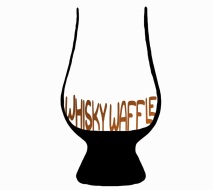
 Tasmania’s #1 whisky blog.
Tasmania’s #1 whisky blog.
Reviews, musings and whisky adventures.
Keep on waffling!
Support the podcast on Patreon: www.patreon.com/whiskywaffle


 Tasmania’s #1 whisky blog.
Tasmania’s #1 whisky blog.Reviews, musings and whisky adventures.
Keep on waffling!
Support the podcast on Patreon: www.patreon.com/whiskywaffle

Posted by: Nick and Ted
Well. 2020. We’re not going to forget you in a hurry. In a year such as this sometimes the only thing you can do is pour yourself a dram. And, hey, to celebrate making it out the other side we may as well make it a good one. Perhaps, even an award winning one! So, ladies and gents, behold: Whisky Waffle’s top drops for 2020!
The Isle of the Drammed Award for the best Tasmanian whisky
We’re super proud of the drams coming out of our home state and so have an award for the best one. This year the Isle of the Drammed Award goes to…
Heartwood A Serious Whisky
Welcome to a new chapter in Tasmanian whisky. For a while, local producers have played around with peat to various levels of success, but this is the first one that has properly nailed what Tasmanian peated whisky can be. It’s no Islay. It’s rich and syrupy but also roasted and smoky. It’s taken the best of Scottish peat and combined it with the sort of rich fortified casks that only Tim Duckett can get his hands on. The future is here. And it looks Serious.
The Drams Down Under Award for the best mainland Australian whisky
Not only do we recognise whiskies from our home state but we acknowledge those made across the water on the Australian mainland. There are plenty of new distilleries starting up but this year there was one bottle we couldn’t look past. The winner of the Drams Down Under Award is…
From Country to Coast
The From Country To Coast ‘Blackfleurieugate’ Collab is one of those things in life that you never knew you needed until somebody invented it. Heavily peated spirit from Black Gate aged in an Apera cask married with heavily peated spirit from Fleurieu aged in a Tawny cask and bottled at 48%. What. A. Combo.
The fruity, oily, salty flavours mixed with the peat are like having happy hour in a beachside smokehouse. A sweet and smokey Aussie duet, like Kylie Minogue and Nick Cave teaming up for ‘Where the Wild Roses Grow’, it’s a pairing that certainly makes you sit up an take notice.
The Tartan Slipper Award for the best Scottish whisky
We now venture back to what we still regard as the motherland of the whisky world. It’s where our love for the drop started, and where is continues to find new flames each and every year. This year, the Tartan Slipper goes to…
Ardbeg Corryvreckan
While we may have sampled this dram in a bar along the way on our respective whisky drinking journeys, 2020 was the year that Whisky Waffle fell in love with the Ardbeg Corryvreckan. There’s something peak-peat about it. Simple and yet chaos in a glass. No frills, just fire. It’s somewhat of a throwback to our early whisky drinking days when peated whisky was a thrilling new world. It’s exciting. It’s a roaring bonfire. It’s exactly what Islay should be.
The Pocket Pleaser Award the perfect pick for the parched penny pincher
It’s a fine line between buying all the whisky that you would like and not filing for bankruptcy. That’s why we have a value-for-money award which goes to a drop that we can purchase without worrying about where the next meal is going to come from. The 2020 Pocket Pleaser goes to…
Corowa Characters
Little brother of previous Whisky Waffle Golden Dram winner, the Bosque Verde, the Corowa Characters release celebrates the team at the distillery. Local Corowa legends The Boss, The Dreaded Distiller, The Fuzz and Muscles certainly know how to craft a character-driven dram.
The Characters uses American, French and Hungarian oak wine barrels from the Barossa and Rutherglen. Most are Shiraz, with some experimental Pinot Noir, Durif and white wine varieties thrown in for good measure. And the price, you ask??? Generally around $90AUD, which is phenomenal for a spicy little Aussie dram and proof that the market is maturing. Perfect for summer drams with mates.
The Weirdsky Award for the most WTF whisky
We like unusual. In fact, we actively seek it out! So each year we present an award to the weirdest flavours, cask types, origin story… whatever makes us scratch our heads the hardest. This year’s Weirdsky goes to…
Spirit Thief Belgrove Coasted Peated Malt
Tasmanian independent outfit Spirit Thief had a bit of relaunch at the end of 2020. We tried the prototype Shiraz and Temperanillo releases a couple of years ago, but since then Brett Steel has evolved the brand into a slick vehicle for exploring the depths of red wine casking.
The first bottles in the new range, Exploration Series 1, uses red wine varieties from all over the world, including Pinot Noir, Grenache, Bordeaux, Shiraz and Mataro. But there was one that really made our heads spin.
Take one portion super dirty, super funky, super cooked coastal peated malted Belgrove spirit, decant into a French Oak Cabernet Sauvignon cask for 28 months and let what can only be described as ‘The Alchemy’ happen. Satay sauce on slightly burnt peperkoek (spiced dutch gingerbread), it’s mad, complicated and weirdsky as balls. Not for the faint hearted, but definitely one for those who are adventurous of spirit. Love it, keep it up Brett!
The Bill Lark Award for service to the Tasmanian whisky industry
Once again we return to Tasmania, the state that kicked off the modern Australian whisky scene. However, instead of recognising a particular drop, we present an award to one of the amazing people pouring their heart and soul into making this little industry a success. The award bears the name of Bill Lark, recognised as the founder of the Tassie whisky movement. It goes to someone who has followed in his footsteps and continued to bring Tasmanian whisky to the world. This year the worthy winner of the Bill Lark award is:
Mark Littler
In the rapidly evolving Tassie whisky scene, it’s easy to forget about Hellyers Road, tucked away on the North West Coast of Tasmania. However, as two born-and-bred Burnie boys, Hellyers Road is our local distillery and has always welcomed us with open arms. In particular, head distiller Mark Littler has always had time for us, showing us new drops, teasing what’s to come and using us as examples to demonstrate his ‘chewing’ technique! He’s been front and centre of Hellyers Road for over 15 years and together with his team has brought Tasmanian whisky to the world through new export channels and visitors to the cellar door. Sadly 2020 was Mark’s last year with Hellyers Road and we Wafflers wish him all the best with whisky-retirement and all the varied projects still to come.
Hear from the man himself in our podcast episode 26 ‘Hellyers Road in the Bloodstream’.
The Golden Dram for the best dram whisky in the world
We close the awards for 2020 with the Golden Dram AKA the best whisky of the year. It doesn’t have to be the rarest, the most exciting, the most expensive or the most indulgent. It’s just the one we keep coming back to and thinking: this is a bloody good drop. And this year the Golden Dram goes to…
Tasmanian Independent Bottlers The Vatted Malt [3]
Please Mister Duckett, sir, we want some more!
When you go back for seconds, or even thirds (and we’re talking bottles here, not drams), it’s probably a good indication that the spirit is hitting all the right spots. We’ve been crushing hard on TIB’s The Vatted Malt [3] since it launched in March 2020.
A vatting of sherry casks TIB ?? 0015 & TIB ??016 (Archie Rose) and TIB AD 80 (Adams), the spirit is super syrupy and oily, with the sweetness of the sherry and the maltiness of the Archie Rose is cut by a tiny amount of the Adams, which adds a subtle dirty peat umami note. And it is gooooood!
Some people rate the Vatted [4], but we are firmly in Camp [3]. And for a mere $150, how could you say no!? Australian malted magic at its best – track down a bottle now while you still can.
Honourable mentions:
2020 was the year of Chardonnay casks! From the Dark Valley Bride’s Veil to the Hillwood Chardonnay Cask 10 we realised the potential this buttery white wine can offer.
The Founders Reserve award AKA the dishonourable mention goes to Archie Rose for tricking us into panic buying their single malt by making us all lose the ballot. Everyone, that is, except Ted, who found the golden ticket.
Finally, have some pictures of the littlest Waffler helping with the photos!
#2020WaffleAwards
Reviewed by: Nick
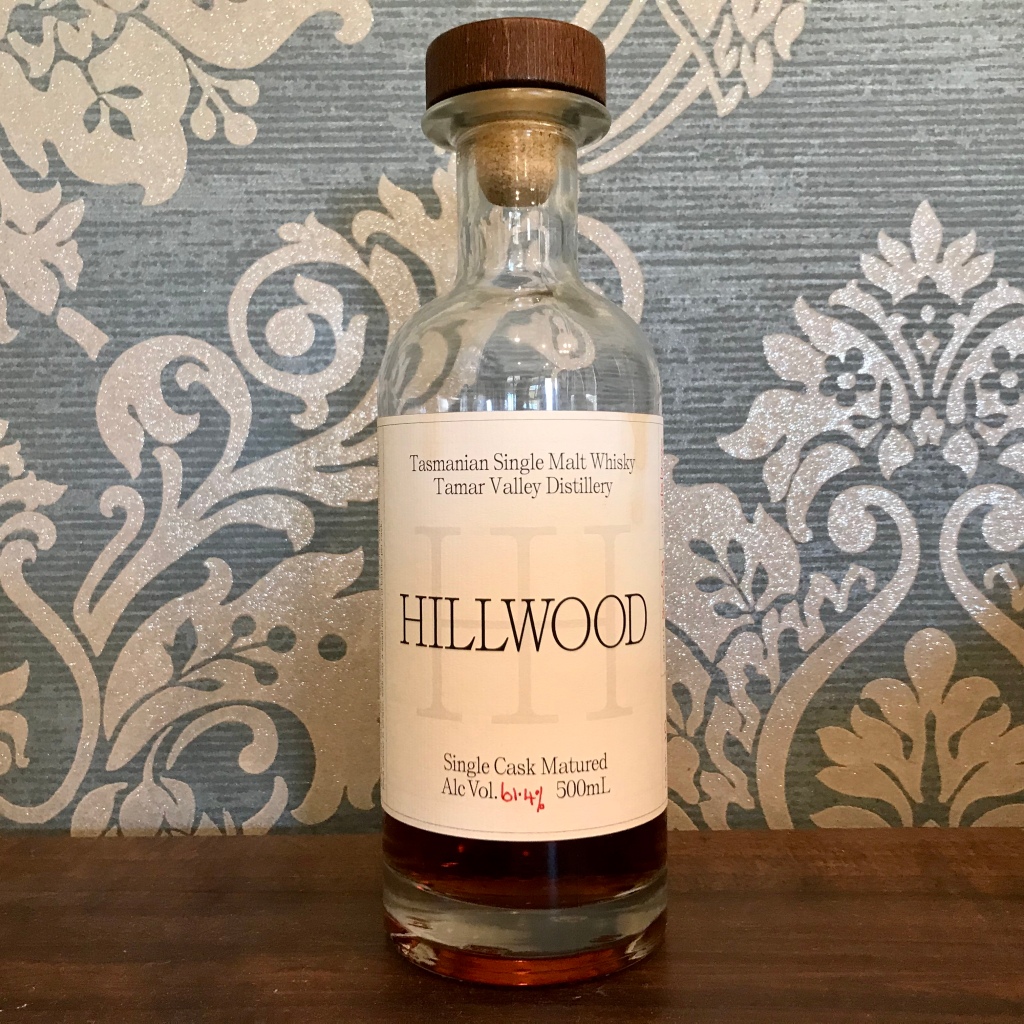
Tasmanian = check.
Single cask = check.
Cask strength = check.
Ex-wine barrel = check.
From a small distillery you’ve probably never heard of = check.
Surely I’ve written this exact review before, right? WRONG! Because this whisky is quite unlike anything going around at the moment!
Hillwood Distillery, based just north of Launceston, is the creation of father and sons team: Paul, Ollie, Daniel and Joel Herron. Inspired by their love of creating things, they decided single malt whisky was a product they could all get on board with. Together, they began to lay down small barrels in 2018.
This particular bottle is one of the first Hillwood whiskies released and was aged in the rather uncommon cask type: ex-chardonnay. The barrel influence is significant and part of what makes this a very different whisky to most coming out of the state. Like all Hillwood releases, it is bottled at cask strength, in this case 61.4%, and was one of only 37 bottles.
Let’s begin with the colour. That colour. Wow. Dark whiskies are actually the norm for Hillwood. Paul believes it is to do with the mineral content in the local water, which I couldn’t even begin to verify, but whatever it is, the whisky comes out of a cask which once housed a distinctly white wine looking like a jar of molasses.
On the nose there is an initial whiff of apricot jam which quickly transforms into white chocolate, butterscotch and tiramisu. The palate is intense and grapey with sweet gooey notes of vanilla-latte and Werther’s Originals: caramel topping on ice cream. There’s also a hint of fruitcake, which is curious considering there’s not a hint of fortified wine used in this whisky’s creation. The finish is long. Oh-so long! The sweetness dries off rapidly leaving a lingering oaky spice.
The wood-influence is noticeably present, in no small part thanks to the 20-litre cask the whisky was aged in, but as much as this threatens to overwhelm the delicate chardonnay notes, it never does, leaving a finely balanced flavour bomb. It is an impressive whisky which gets better with every sip.
For many folk there must be a temptation to pass off the Hillwood Chardonnay Cask as just another unpredictable single cask release, yet I can thoroughly recommend seeking this one out, or at least something similar from Hillwood. There is a mini chardonnay cask movement occurring at the moment and it is fascinating to taste the results. I would even go so far as to argue that this is the best of the bunch.
★★★★
Posted by: Nick
Over the past two years we have brought our Waffling to the airwaves with our Whisky Waffle Podcast. It’s reached people all over the world and we’ve recently added an interview series with people in the industry. It’s all looking pretty exciting for the future of the pod – which is why we are trying to take things to the next level by launching a Whisky Waffle Patreon!
Patreon is an (completely optional!) service where you can pay as little as a few dollars a month to access bonus content, have a say on features for the pod and become part of an inner circle of Wafflers. Hosting a podcast costs us lots of money, not to mention the countless hours spent editing and we hope that through Patreon we might be able to balance out some of that.
Here is a run down of the tiers you can jump in at. Amounts listed here are in (roughly) Australian dollars as the website works in American dollars. Each tier receives the benefits of those below it in addition to the tiers own rewards:
$3/month: Carrier Pigeon. You will get your name on our High Spirits List, access to our posts and the ability to vote on what whisky we review
$5/month: Feints Club. You will get access a bonus episode ‘The Feints’ every month. The Feints is a section (usually recorded late in a recording session) far too waffly to use in a regular episode
$10/month: Official Waffler. You will receive an induction as an Official Waffler on the pod, a personalised membership certificate and get access to the whole uncut Waffling With interviews which we conduct
$25/month: Drinking Buddy. We will send you (as a gift) a 30ml sample of our monthly review whisky so you can drink along with us!
$50/month: Tasting Panel. We will send you (as a gift) a 30ml dram of something local and/or interesting that we’ve been tasting recently
$100/month: Cask Strength. Basically you will become our hero and we will worship you on each episode of the pod. We’ll make you personalised tasting videos and regularly go on about your awesomeness.
Just a quick note: the tiers where we post you out a little sample bottle are Australia-only at the moment (sorry!)
Just to clarify, there is no compulsion to join our Patreon. The podcast will continue as normal and everyone will be able to access it for free. However, there will be bonus content available for those who want to come with us on this journey.
Posted by: Nick
Terroir /tɛrˈwɑː (n) the characteristic taste and flavour imparted to a whisky by the environment in which it is produced
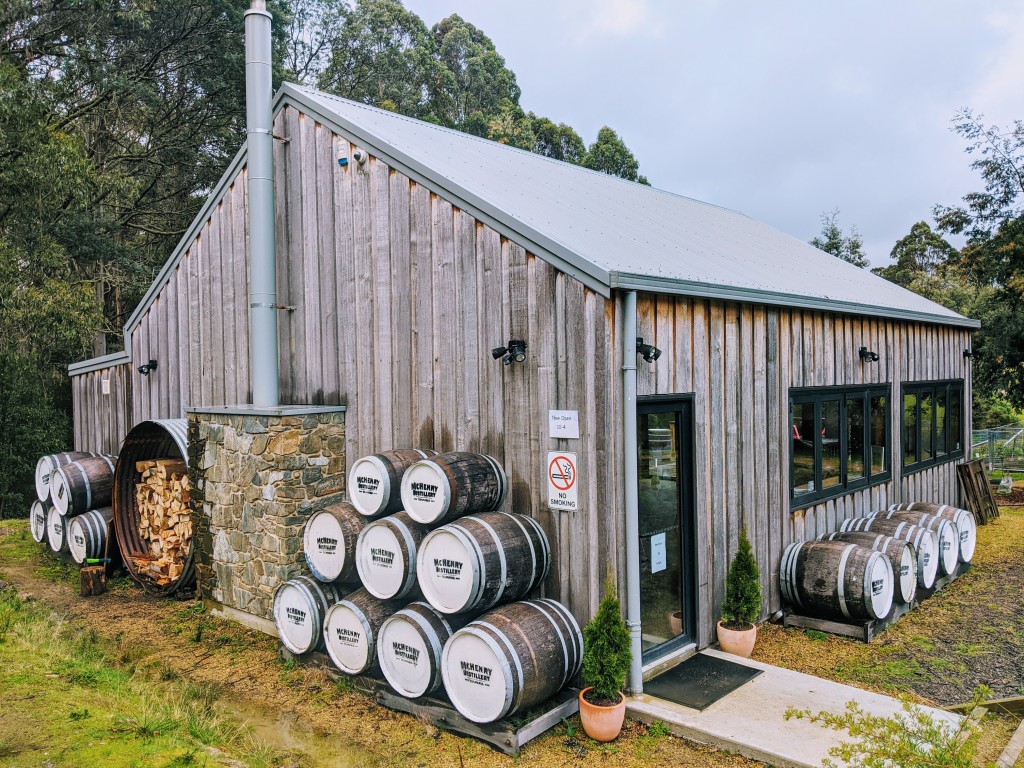
Terroir is a divisive subject. How much impact can water, soil, air and climate really have on a whisky’s flavour in comparison to cask types when aging and cut points when distilling?
I was in the camp that would claim ‘negligible’. And then I went to McHenry Distillery. Now I get it. Because when we drank a specific whisky in a specific location… it all lined up. It all made sense. McHenry is a distillery like no other in Australia. In fact, the only comparison you could make… is Scotland.
The Scottish connections run deeply through the veins of McHenry Distillery. The day we visited veered wildly between cold and freezing with the occasional gust of snow. In fact, the near identical rainfall and humidity levels mean whisky maturation is more Scotland than Tasmania, even down to the cask size: there is hardly a 20 litre barrel to be found, with 200 litres or more preferred. And then there’s the man himself: founder and head distiller, William McHenry, who began seriously entertaining the idea of making whisky when a friend suggested that he had the right name for it.
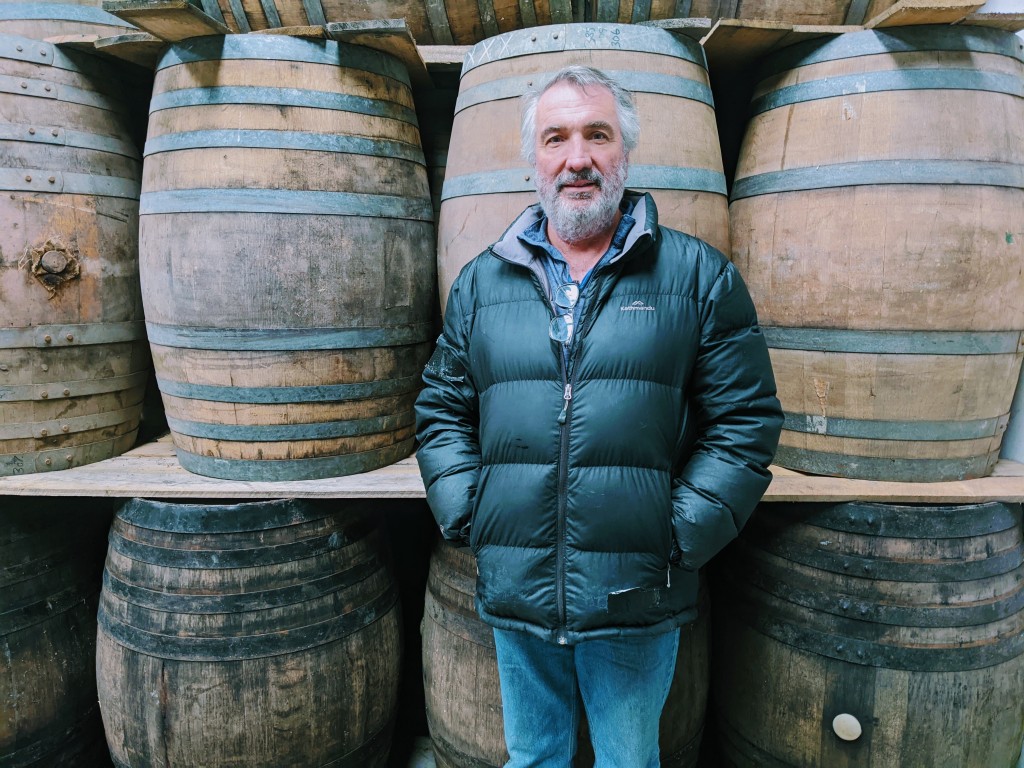
William, or Bill, when Mr Lark is not in the room, made the momentous decision in 2010 while living in Sydney, to uproot his family and move their future business to a remote wilderness block half way up Mount Arthur on the Tasman Peninsula. Standing at the top looking out across the wilderness really does feel like you’ve come to the edge of the world. While these two cultural extremes may have been jarring for the family, Bill immediately felt at peace, particularly when he discovered a natural spring flowing out of the mountain.
“Having grown up in Adelaide, the driest state in the driest country on earth, when you have a water source on your property, you cherish it. It’s gold. And because the water coming off the Southern Ocean is falling through some of the cleanest air in the world, it deposits some of the best quality water you can find on the planet. And that certainly makes this place special.”
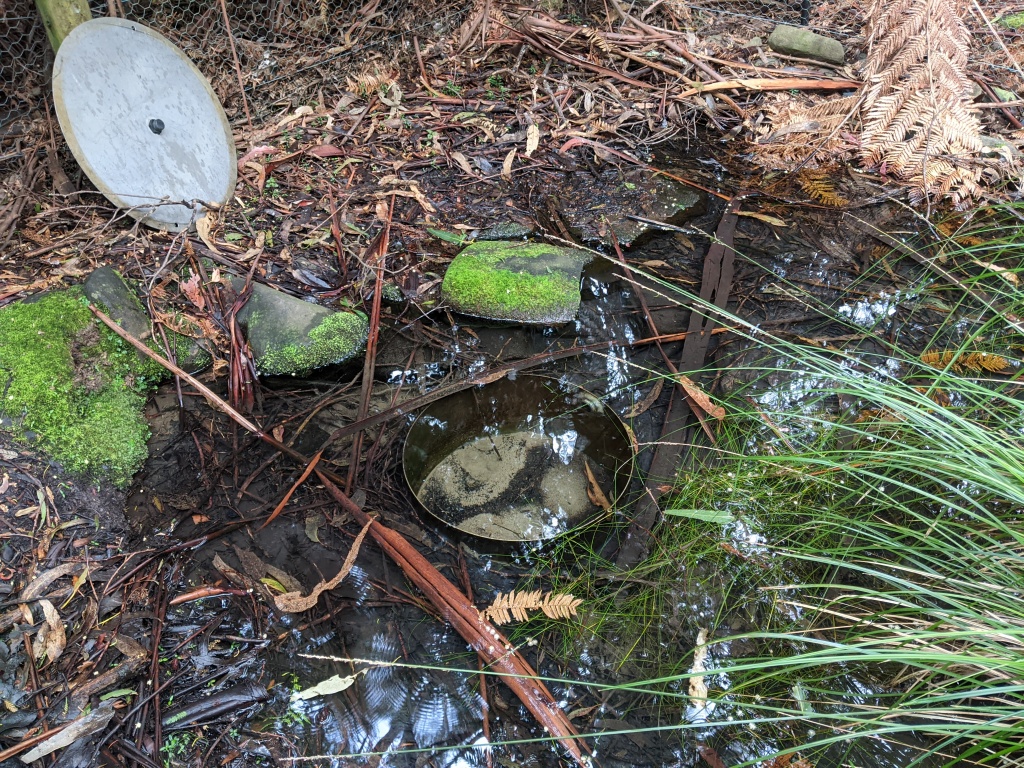
After tapping into the spring to provide the water for his whisky, he got to work turning this untamed patch of land into a distillery.
The site resembles a frontier town. A series of long, narrow buildings spreading outwards from an off-centre origin, the timber cladding all rapidly turning a distinguished silver. It is a distillery that has clearly expanded organically, a new building established here or there when the need arose. There are small cabins for guests to stay in, and bond stores starting to be dotted around the hill. And there’s plenty of room for more.
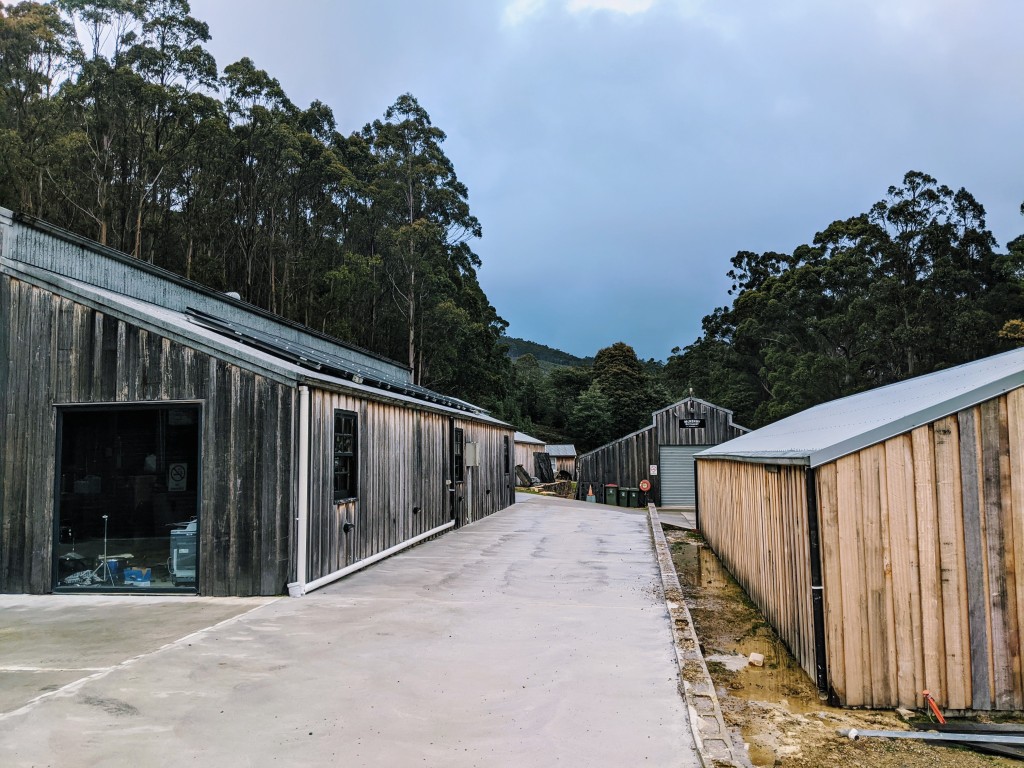
Half way up Mount Arthur is the gin-making pavilion, the Devils Lair cottage and most special of all: The Bothy. Sheltering inside the tiny room next to a roaring fire with a dram of McHenry whisky while a storm rages is one of the most authentic whisky moments Whisky Waffle have experienced. As Bill poured us a dram, we realised this is how the environment influences a whisky. Three mates, four walls, a sleepy dog and a roaring fire. This is what terroir is all about. It may not be the traditional French definition, but the impact the sense of place had on our interpretation the flavour of is undeniable.
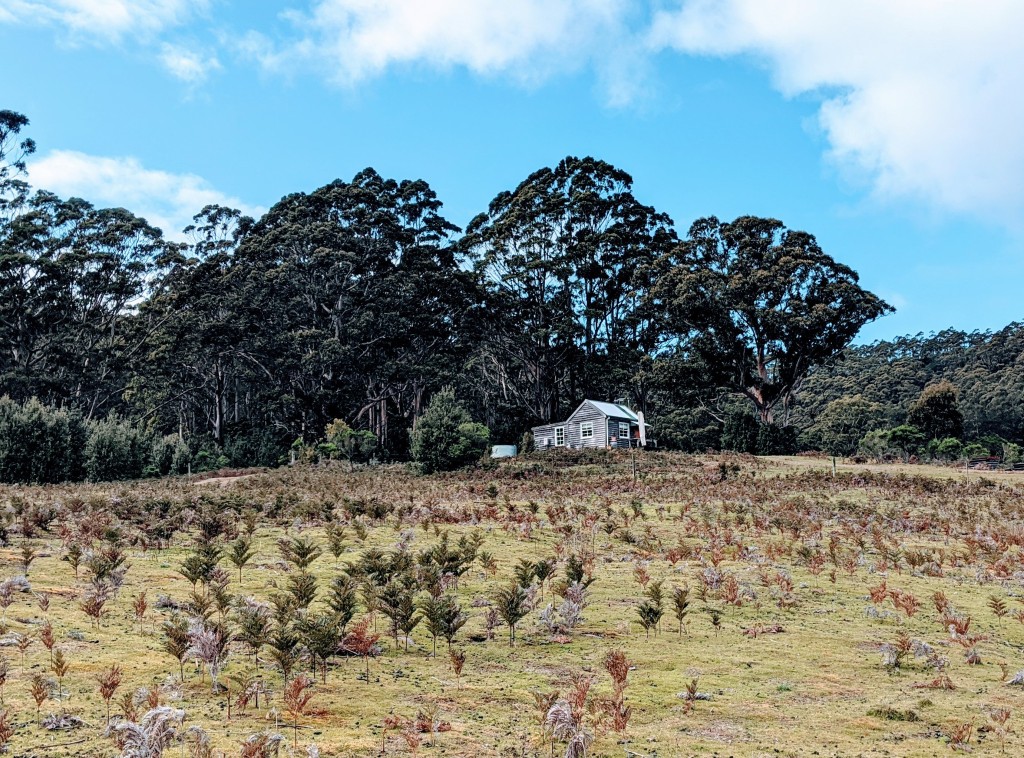
If it feels like McHenry Distillery has been around for a while but not released much whisky, it’s because this is largely true. Bill has no interest in releasing whisky before its time and would largely like to stick to vatted age statement releases. Again, sticking to the formula laid down by the Scots.
Instead, you may know McHenry only for their gin. Bill was an early adopter of the while-we-wait method of gin creation and quickly became one of Australia’s most renowned gin makers, even becoming the official gin provider for government house with their exceptional ‘Federation Gin’.
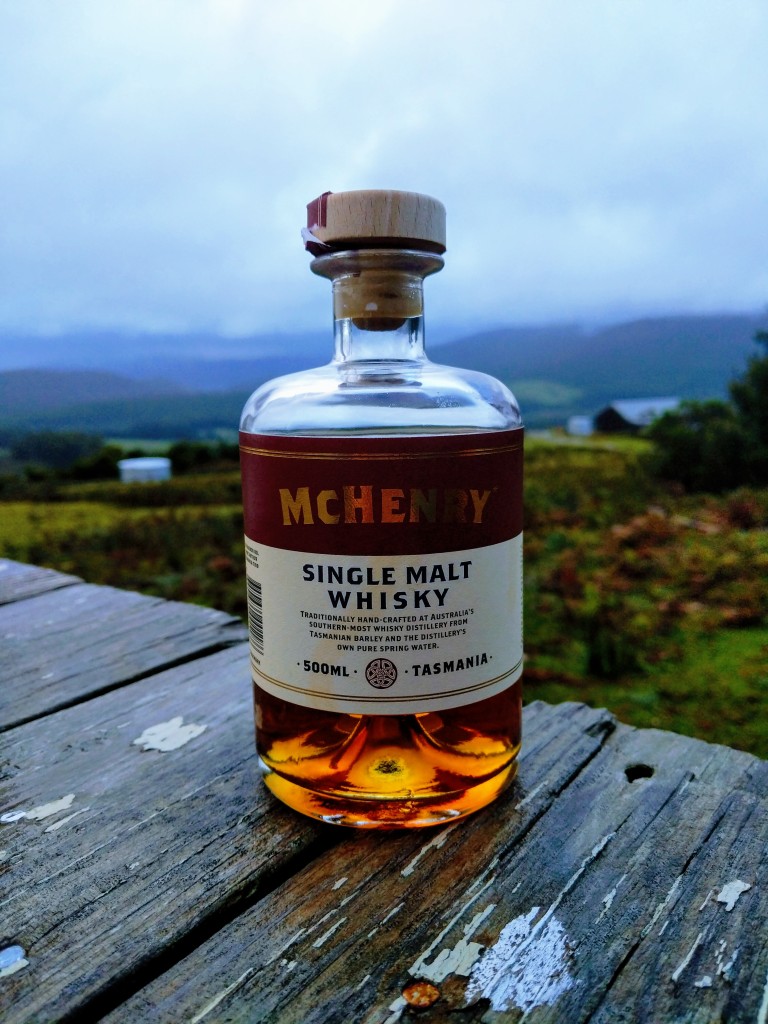
However, fellow Wafflers take heed: 2021 will see some 10-year-old McHenry whisky come of age and, in a few years, Bill hopes to have a readily-available supply of consistently flavoured whisky unleashed upon the world.
And when you do get your hands on a bottle, you can easily pour yourself a tasty dram of McHenry whisky wherever you are in the world. But sitting in a storm-lashed bothy at the edge of the world? That is the truest experience of all. Experience that and you might finally believe in Terroir.
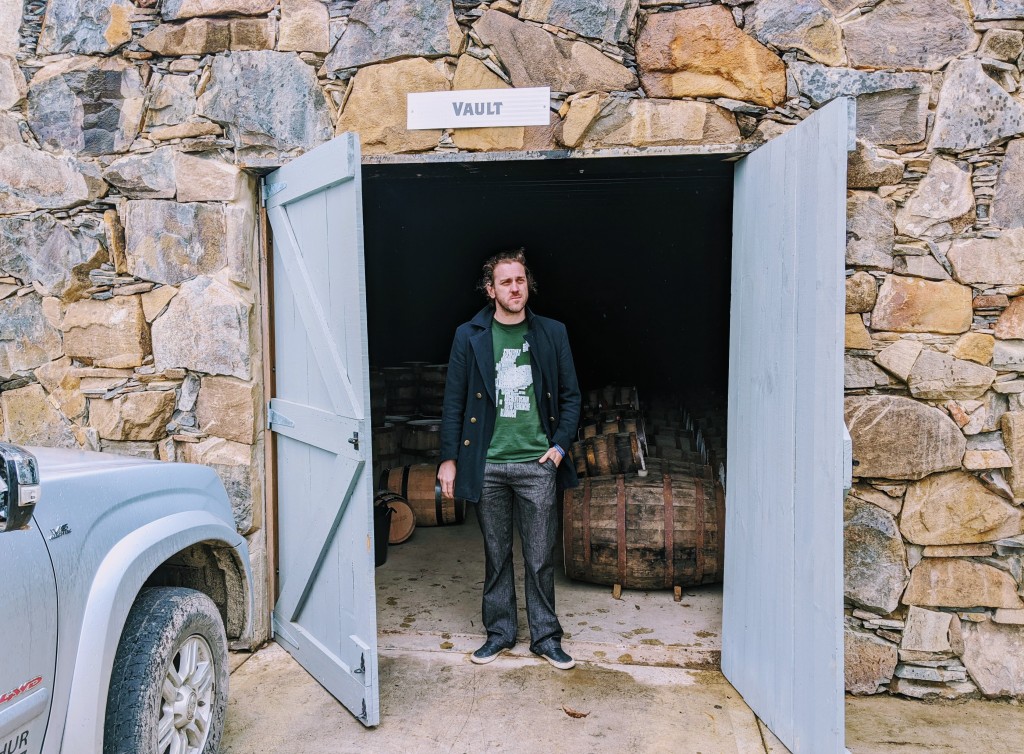
Posted by: Nick and Ted
AWH is dead. Long live Lark Distilling Co.
Recently there has been quite a bit of talk and speculation surrounding Lark and a couple of their new releases. The new Symphony No. 1 and the 3rd Wolf of the Willows collab both bear the Lark logo on their labels, however the former states that it is a ‘blended malt’, while the latter proclaims that it was distilled at their ‘Bothwell site’ (i.e. Nant Distillery).
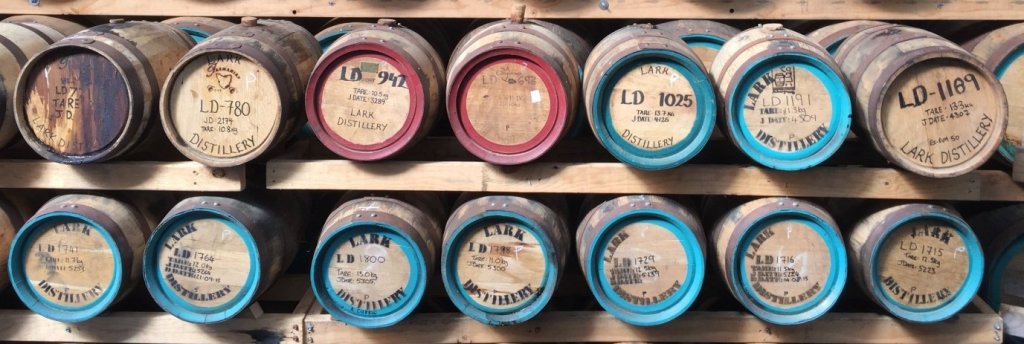
The fact that both releases contain spirit that was not distilled at Lark’s Cambridge site sparked controversy in some quarters – should the labels really still say Lark, or should they be called something else entirely?
Enter, the House of Lark.
To cut through conjecture and rumour, Whisky Waffle went straight to the source at the Lark Cambridge production site and met with Head Distiller Chris Thomson.
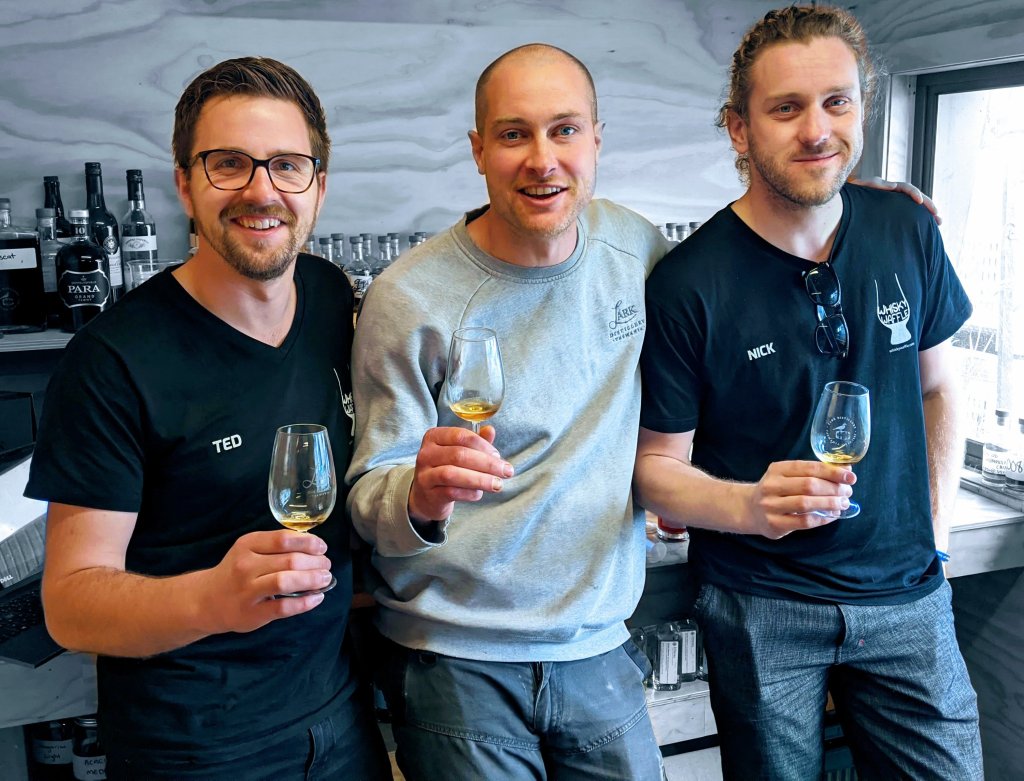
Chris was able to reveal to us that Australian Whisky Holdings (AWH) has been reformed as Lark Distilling Co. and will release Lark, Nant and blends such as the Symphony No. 1 under the umbrella of the ‘House of Lark’. The bottle label will specify which distillery site the spirit was produced at for single malts, or state if the release is a blended malt (but won’t necessarily identify the individual distilleries).
However, we are able to exclusively reveal that the Symphony No. 1 is a combination of Nant, Overeem and Lark casks. In regards to the Wolf of the Willows 3rd collab release, Chris told us that he had searched the entire House of Lark portfolio for the perfect whisky to finish in Wolf’s Johnny Smoke Porter barrels, eventually landing on Nant.
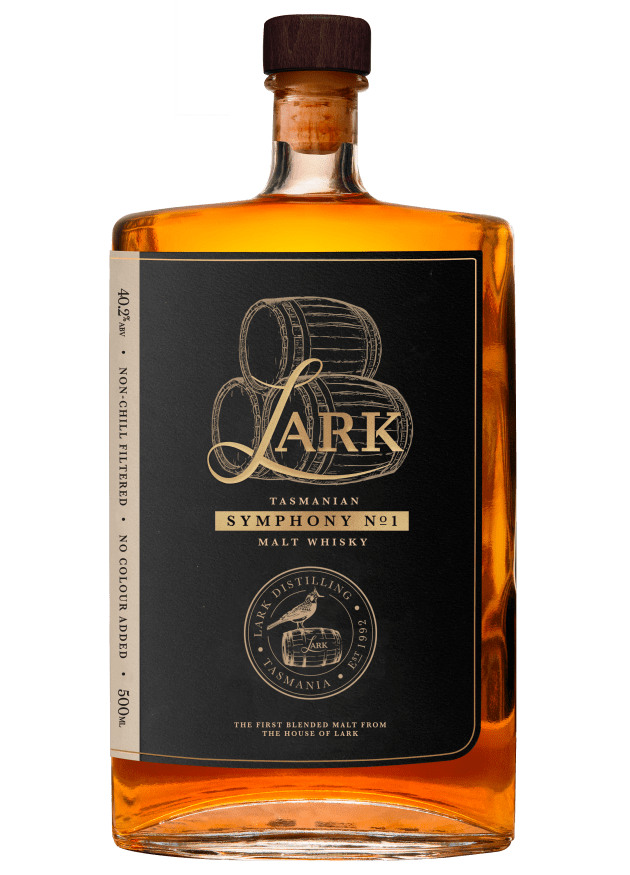
Speaking of Nant, Chris confirmed that the name will survive, but will have the House of Lark brand on the labels alongside the Nant logo. He said that moving forward, Nant will continue to release bourbon, sherry and port casks, but will move away from the brand’s traditional single-casking to a “marriage style”.
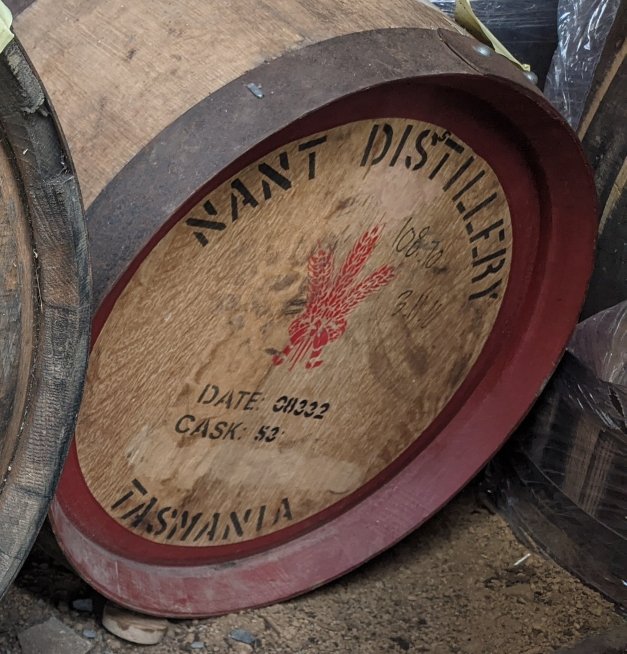
Chris is now the head distiller across the entire House of Lark portfolio, giving him creative control across all the brands and access to the full range of Lark Distilling Co. barrels –
“Growing in size means that there are more casks to pick from and less pressure to get stock out, so we can take more time with the barrels.” Having more stock to choose from also means that they can select the right cask for the right purpose.
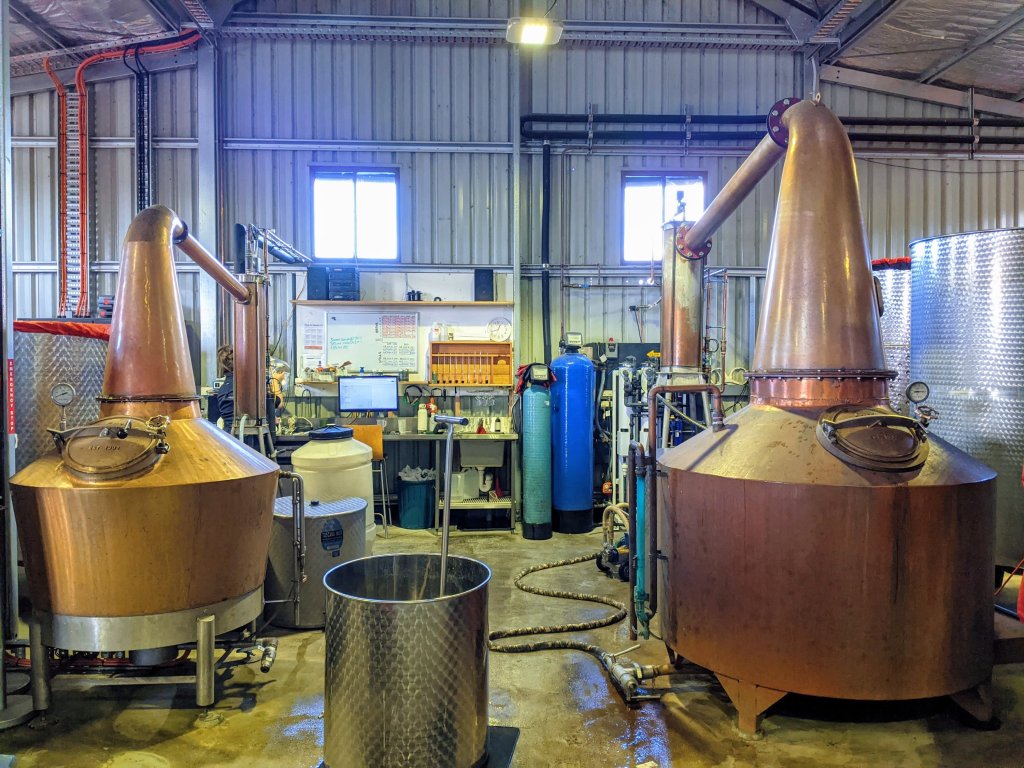
Chris acknowledges the need for transparency and that there may have been some confusion amongst consumers about the origins of the Symphony No. 1 and the 3rd Wolf of the Willows releases – “The goal has always been about quality, but we’re still learning lessons about how best to communicate that.”
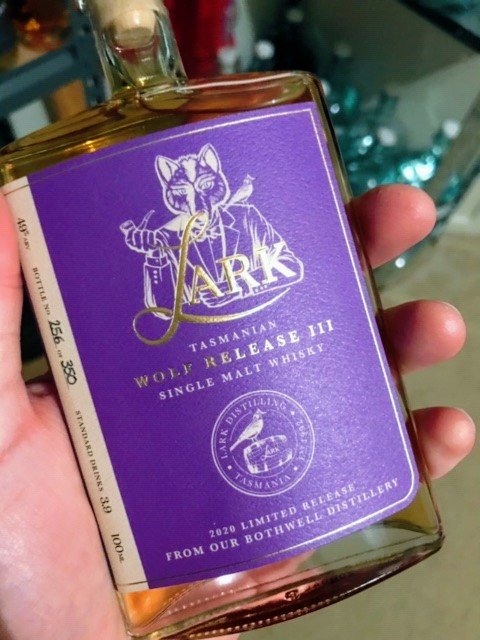
Chris said that they would be working to educate consumers about the meaning and ethos of the House of Lark, as well as taking practical steps like increasing the font size of the distillery origin on the labelling for better clarity.
Our biggest takeaway from our meeting with Chris was just how excited (or in his words “beyond pumped”) he was about the new direction for the company and the move to the House of Lark identity. Speaking enthusiastically about the Symphony No. 1 release, he told us that –
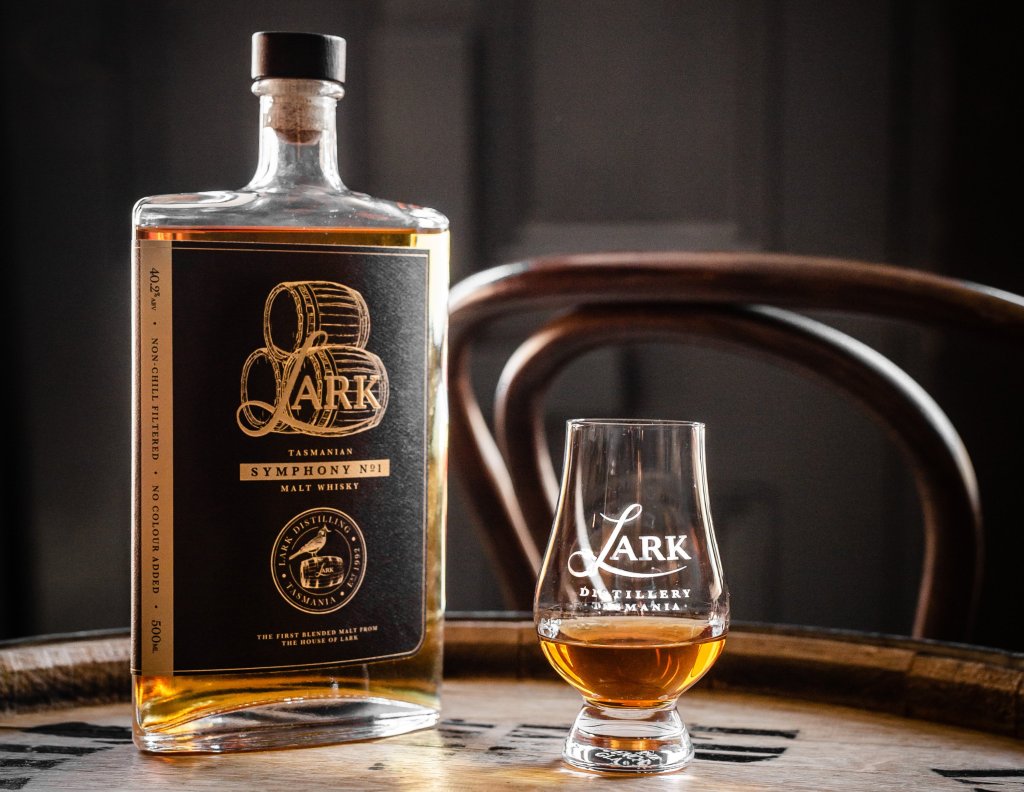
“It’s about accessibility and drinkability, with enough complexity for people who have drunk malt for a decade, or you can sit back with your buddies who have never drunk malt before and they’ll love it. It can be mixed, straight, on ice or in a cocktail.
“For me this is just the next step in the evolution of Australian and Tasmanian whisky.”
Reviewed by: Nick
Goddammit, Diageo has some hidden gems!
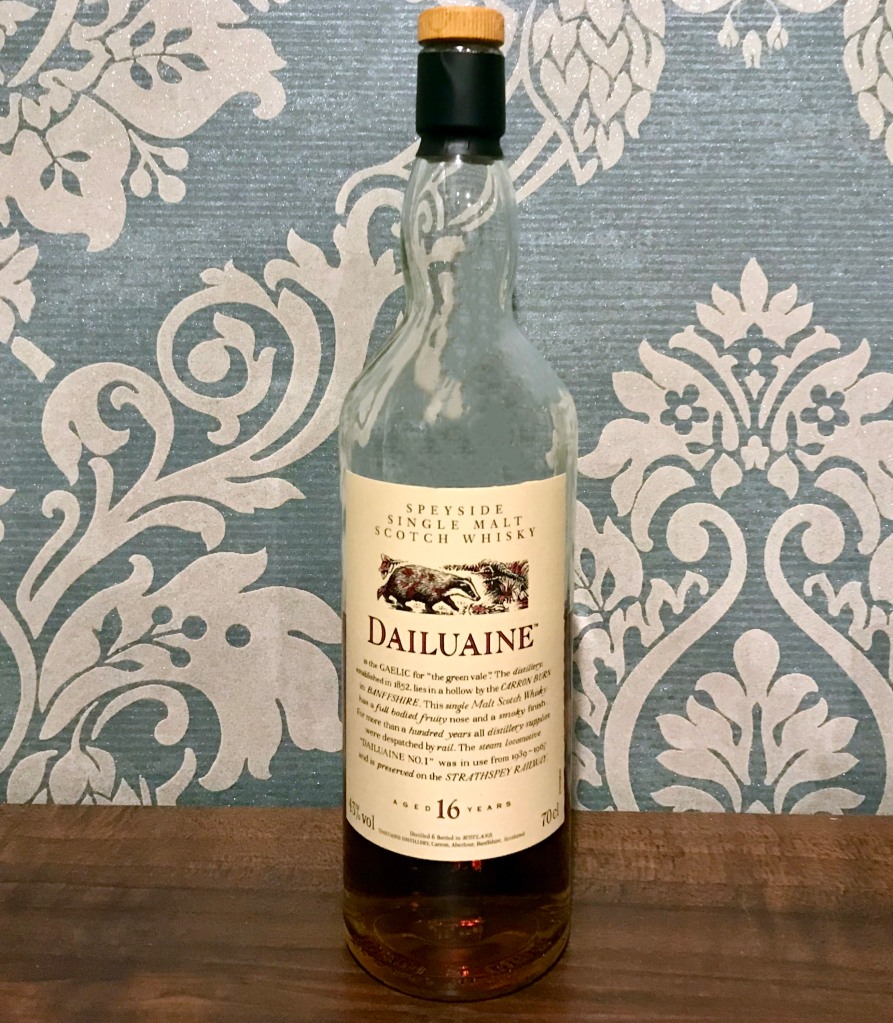
Diageo, for those who don’t know, is the largest spirit producer in the western world. Their whisky makers include heavy hitters such as Lagavulin, Dalwhinnie, Talisker and Caol Ila. However, these ‘classic malts’ only constitute part of their collection – there are a number of other distilleries whose spirit you probably would have only tasted mixed into a dram of Johnnie Walker.
Dailuaine is one such distillery, a Speyside establishment known for its heavily sherried style. While you won’t find it in many mainstream bottle shops, it is not impossible to track down an independently aged version and if you find some hidden upon a dusty shelf, then it is well worth picking up. This particular Flora & Fauna bottling is bottled at 43% after aging for 16 years in ex-oloroso barrels, a maturation that has contributed significantly to its flavour.
On the nose, the taster is immediately presented with the classic fruitcake aromas typical of its cask type. Hints of cinnamon doughnuts follow, alongside fresh fruit such as apples and melon. On the palate there are tangy orange juice flavours alongside buttery shortbread and chocolate coated raisins. The finish is long and chewy with toffee-almonds and a hint of lingering oak.
While Dailuaine may not be the most famous of Diageo’s stable, it proves that there’s a lot of exciting whiskies to try if you stray from the well-worn path. Next time it might be a Strathmill or an Inchgower, or perhaps a Blair Athol or a Mannochmore…
***

Posted by: Ted
So, acting on a whim, I popped over to sunny Tel Aviv in Israel the other day to do a spot of whisky tasting and a distillery tour.
Actually, that’s a lie. The government won’t let us leave Australia yet and I was sitting around freezing my tits off on a wintry Tasmanian evening. But, through the magic of the internet, I was still able to go venturing off into distant exotic lands to partake in a dram and a tour of Milk & Honey Distillery (M&H), Israel’s first whisky producer.

The Spirit Safe and Alba Whisky, the local distributor for M&H, were kind enough to send us a sample pack and an invite to join the Australian (digital) launch of M&H. Zooming in from my rather messy back room, I joined a group of fellow digital denizens to land in the rather more well appointed office of Ian McKinlay, Managing Director and highly knowledgeable chap at The Spirit Safe.
Greeting us with a Scottish brogue, softened by many years spent in the Antipodes, Ian made sure we were seated comfortably and then hit the magic button to beam us half-way across the globe to the shores of the Med Sea. Landing in Jaffa, the ancient port city from which Tel Aviv grew, we were met by the beaming faces of Tal Chotiner (International Sales) and Tomer Goren (Master Distiller) at M&H.
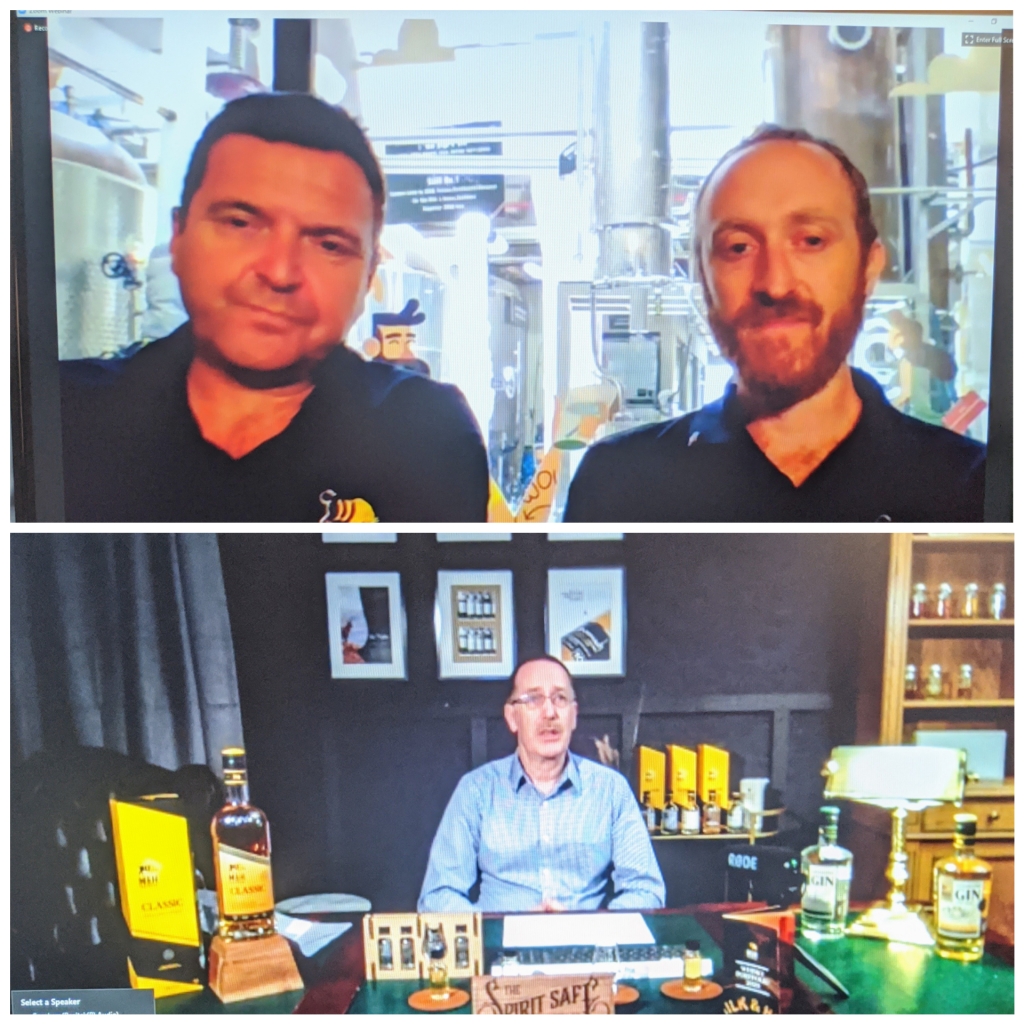
They were probably happy because it was 30°C and humid in Tel Aviv that day (like most days there during summer). Tal previously worked in various roles for Diageo, while Tomer worked at Tomintoul and Springbank, as well as completing his Master Distiller degree two years ago. After introductions, sitting in front of a webcam in an office, the lads leapt up to take us on a tour of the facility, Tal trailing Tomer with a smartphone. Technology eh!?
We wandered through the small visitor centre/bar, taking in the striking black and yellow colour scheme of M&H, before stumbling out into a sprawling, maze-like facility that used to be home to a bakery. Tal remembered visiting it when he was young and the pervasive aroma of the baking bread – “One good smell traded for another!” quipped Ian.

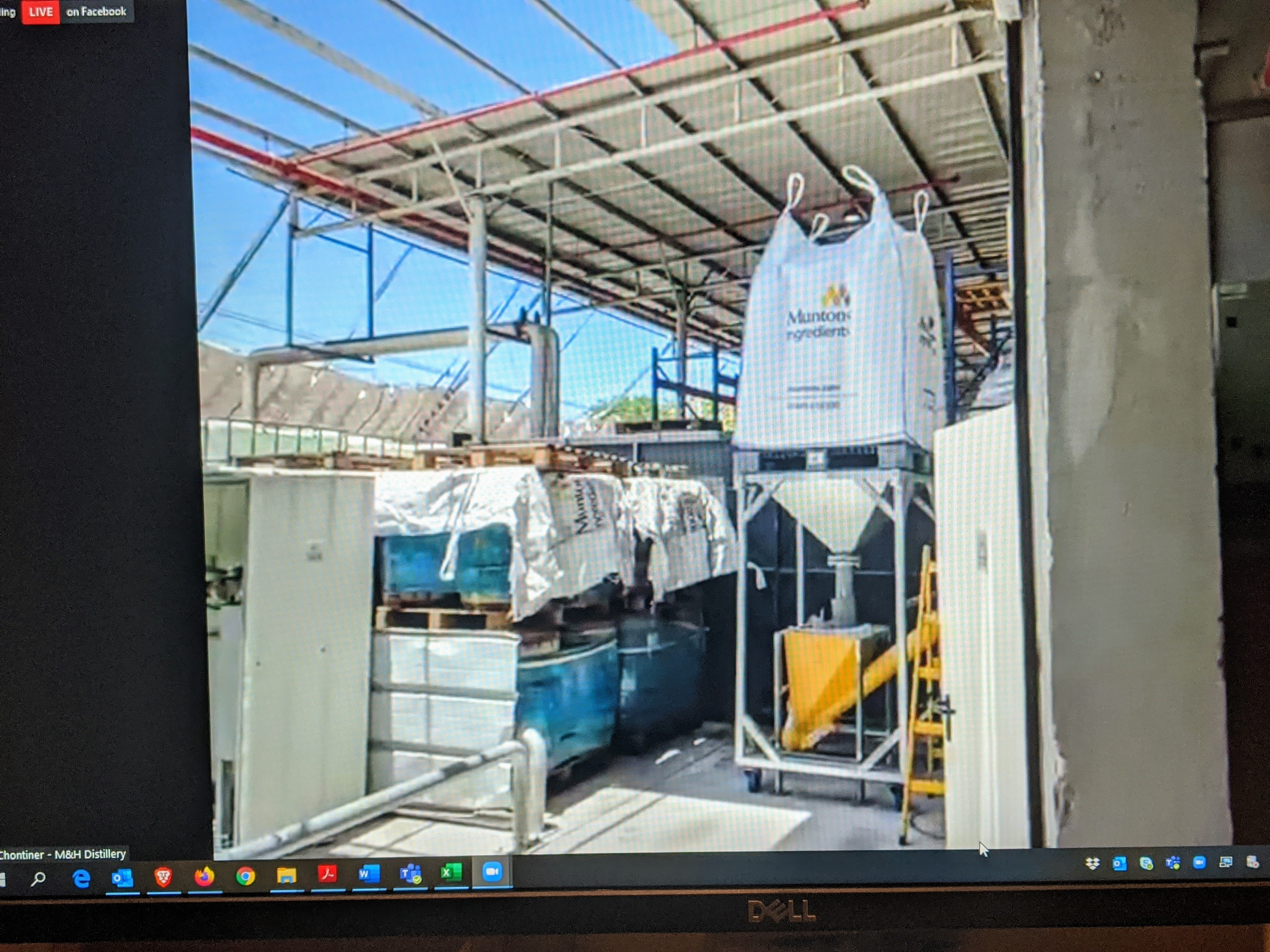
We visited the backyard, where water from the municipal supply arrives and is mixed with salts, the grain mill, the locally made one-tonne mash tun and the four large washbacks (two more are already in the pipeline). The usual fermentation time is 72hrs, but this drops to about 68hrs during summer. Interestingly, at least from an Australian perspective, the distillery doesn’t operate on the weekend because it is kosher, observing the Jewish Shabbat.

Next up were the stills, a 9000L beauty of a copper wash still that the team found in a shed in Romania, but probably originated in Spain, and a custom-built 3000L copper spirit still from Germany. Apparently they thought the wash still was rather smaller based on it’s picture, but it turns out the door it was sitting next to was actually a massive barn door. The lyne arms slope down at 45° angle to produce a very oily newmake that holds up well under fast maturation. Nearby was a small 250L copper pot belly/onion head still used for gin production.
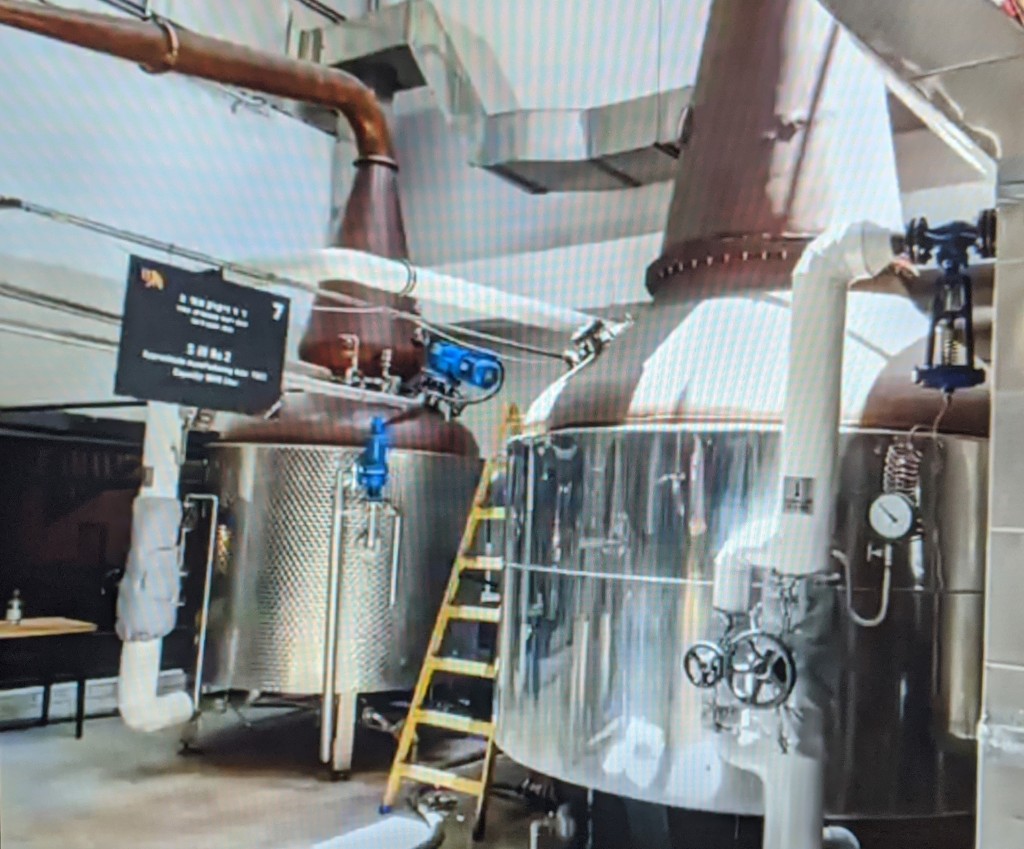
For the final part of the tour we were taken into the warehouses. #1 housed 200 or so privately owned casks, while #2 and #3 were home to a further 2000-odd production casks, looking very spiffy in M&H livery, with their black heads and yellow lettering. Most were ex-bourbon, but there were some other very curious editions that we’ll come back to shortly.


Back in the office, Tal and Tomer took us through a screen-shared presentation that delved further into the brand. The name of the distillery comes from the description of the Jewish promised land in the Bible as “a land flowing with milk and honey” (Ex. 3). The logo, a bull with black and yellow stripes, further references this (apparently they tried a cow first, but it just didn’t look as cool).
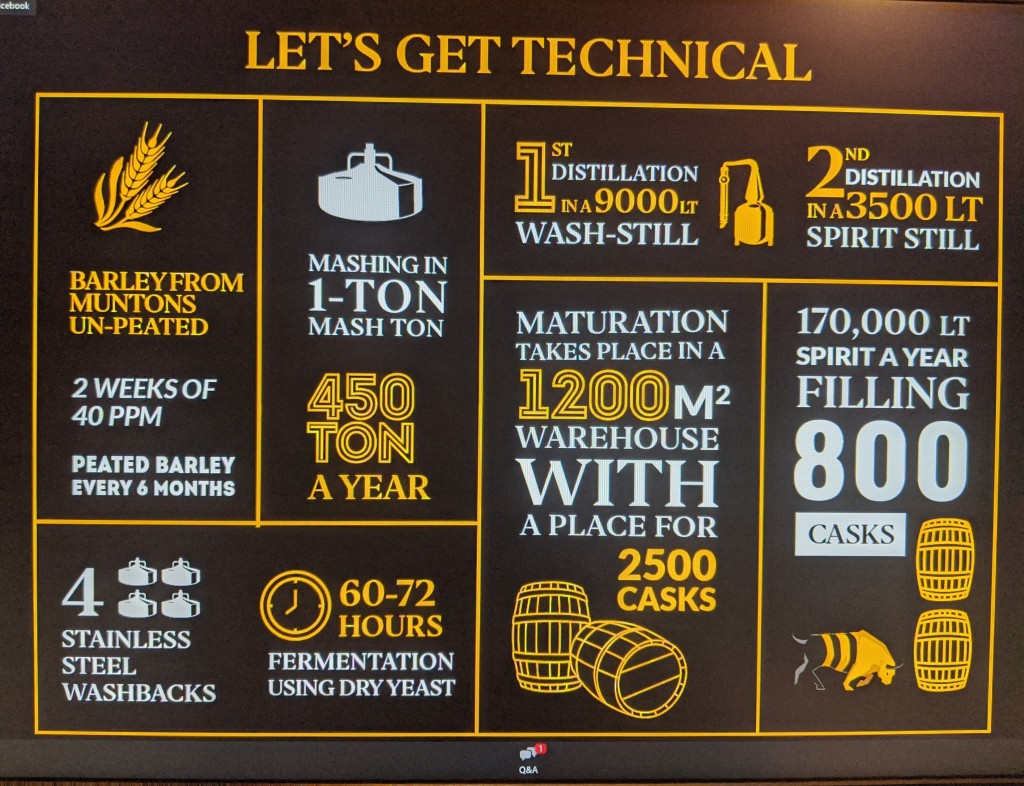
Climate plays a massive role for whisky maturation in Israel. For a country that is only 420km long and 115km wide, there are actually five distinct climate zones: Upper Galilee, Jerusalem Mountains, Mediterranean Coast, Desert and the Dead Sea, a collective described by M&H’s late mentor, Dr Jim Swan, as the ‘Climate Playground’. M&H make use of this and age barrels in various locations around the country, with interesting results.

For example, we were shown two bottles of whisky that were produced at the same time using identical spirit and barrels, but one aged in Tel Aviv on the coast and the other at the Dead Sea (which is 430m below sea level but very dry). The results were incredible, with the Dead Sea dram markedly darker than the Tel Aviv one. Even Jerusalem, which is only “45 minutes and 3000 years” away from Tel Aviv according to Tal, produces noticeably distinct results due to the difference in altitude (754m).
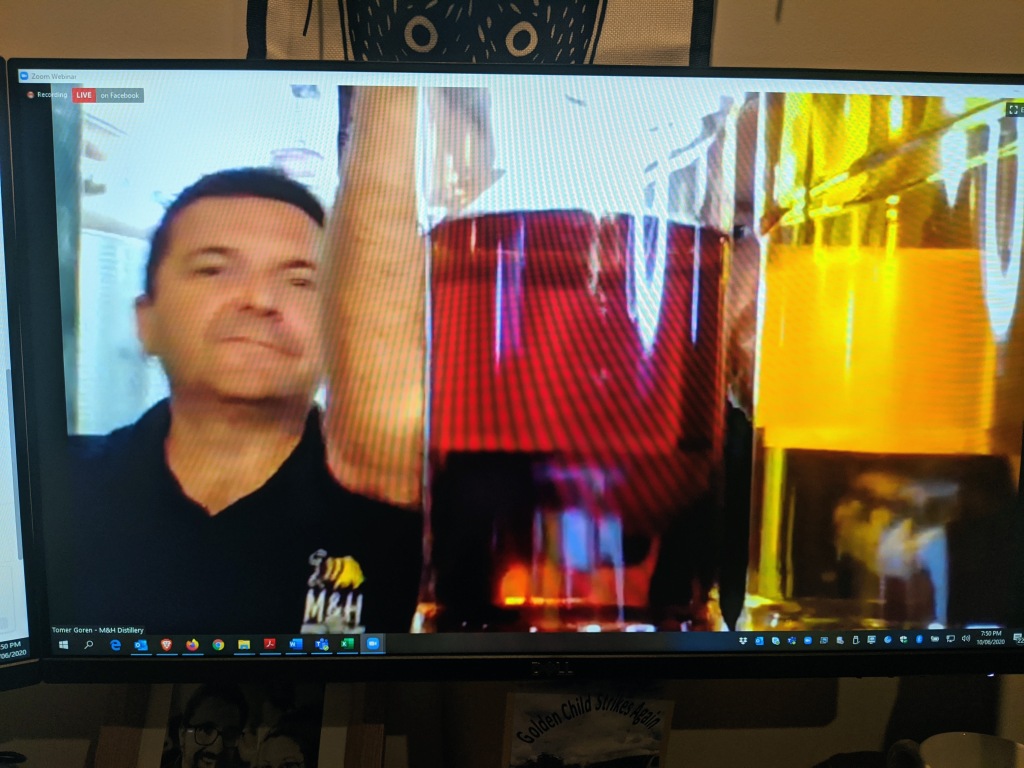
In terms of barrelling, the majority are ex-bourbon and STR (‘shaved, toasted and re-charred’, a technique developed by Dr Jim Swan), which develop lots of character in the first year before balancing out. Beyond this, more interesting casks such as locally produced kosher wine barrels are used, which is fitting, as according to Tomer “we have a 4000yr old wine culture, so it’s part of our DNA.”
They also have a seasoning project running in Spain with a Bodega that is able to produce kosher Pedro Ximenez and Olorosso sherry. Probably the most interesting barrels in use have previously held pomegranate wine, which according to Tomer is a signature Israeli flavour.

The whisky we were sent with our tasting pack was M&H’s ‘Classic Cask’, a 3yo aged in 75% ex-bourbon, 20% ex-red wine STR and 5% virgin oak and bottled at the magical 46% ABV. To me the nose was oily, creamy and gooey, with peach, apricot, custard, butterscotch and marshmallow, while the mouth was dry, with toasted timber and wine. It was really different to anything I could think of, which I suspect was a product of the unique Israeli terroir and climate, but I really liked it.
Speaking of the climate, the high daily temperatures and humidity and cool night develop huge amounts of action in the barrels, meaning that maturity is reached very quickly. There is a price to be paid though, as the angels’ share is around 9-11% annually (and can even be as high as 25% in areas like the Dead Sea!!!). Ideally Tal and Tomer would like to see their larger barrels reaching around 4-7 years in Tel Aviv and 4 years in other areas.
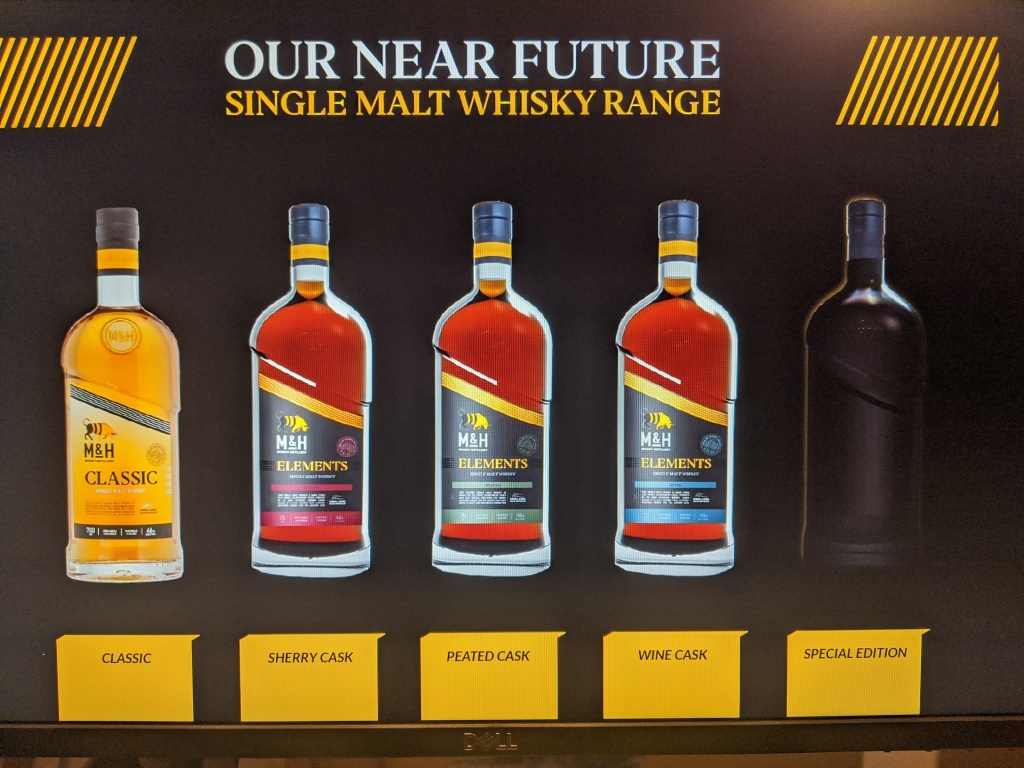
As well as the Classic Cask, the other drams in the core range will include ex-sherry, ex-wine and peated (using peated barley from the Czech Republic). Additionally, there will also be a revolving special edition range featuring interesting editions such as the ex-pomegranate casks and Israeli ex-chardonnay casks from the Jerusalem mountains.
The tour ended with a tasting of M&H’s Levantine gin, made using za’atar (a ancient native oregano), and their barrel aged gin under the cheerful gaze of Oded Weiss, M&H’s gin specialist. While Tal rustled up some G&T’s garnished with orange peel and fresh thyme, the team took some questions and reflected on the nature of their operation.

According to Tal and Tomer, in general Israeli consumption of alcohol is quite low, so M&H was founded with export in mind (which is lucky for Australia). “There aren’t really any rules in Israel around whisky production, so we decided to follow the most respected model out there, Scotland. That’s the reason we went for a whisky that was at least 3yo, as the international market would accept that more easily and allow us to build a solid reputation based on our quality.”
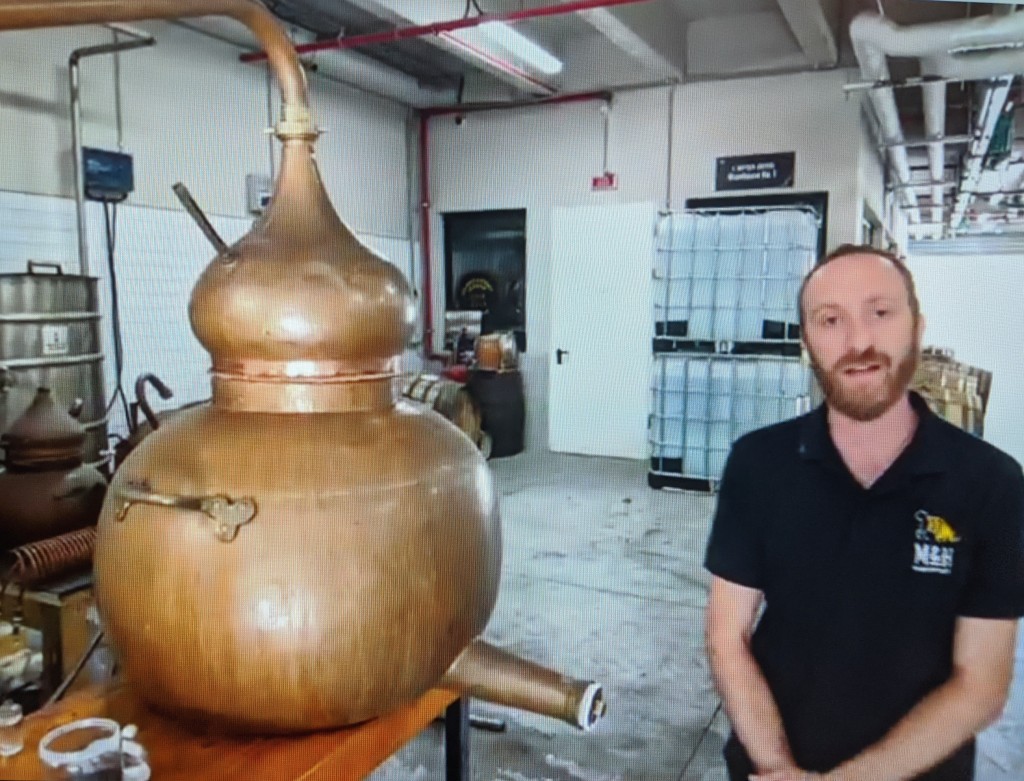
In Tal’s eyes, one of the major benefits of being a craft distillery, particularly in Israel, is the flexibility: “We throw ideas around as a team, like ‘wanna do a rum cask? Yeah, let’s do that!’. It’s about running ahead and thinking outside the box.” Tomer agrees: “Where we live is the culture capital of Israel and we’re able to draw influence from all over the world. Tel Aviv itself means ‘old ruins’ and ‘spring’, which I think is a reflection on how we make our whisky. It’s traditional ways with crazy new ideas.”
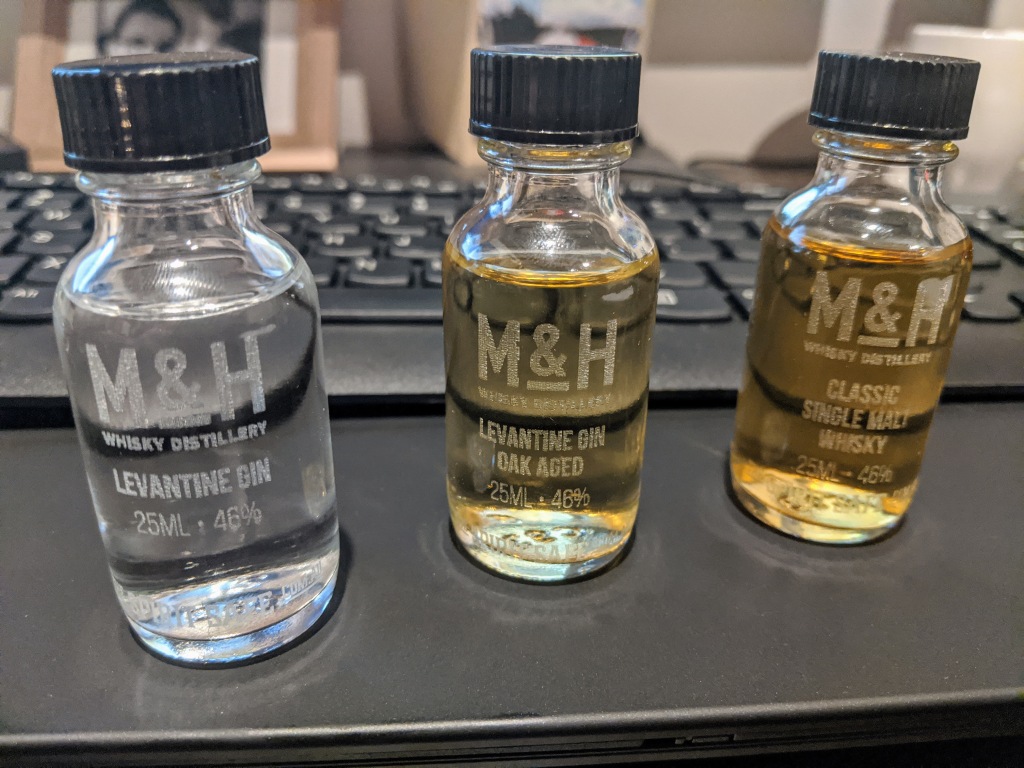
As Ian brought the session to a close, I reflected on the experience I had just had. I’ve been to internet tastings before, but I still think it was pretty amazing that I was able to sit here in Tassie, with everything that’s been going on in the world lately, and ‘visit’ a distillery in Tel Aviv in real time, something that I would probably never have a chance to experience otherwise (you never know though…). I suspect that live online events will become a staple in the future and allow the whisky community to connect with each other and share their passion in new and creative ways.
If there’s a silver lining to come out of COVID-19, it’s that what’s keeping us apart might just bring us together across the world like never before. And these days, that can only be a good thing, right?
You can purchase Milk & Honey Distillery’s products in Australia from The Spirit Safe
This episode contains:
– The Waffle, where we discuss/gossip about developments at Tasmania’s most famous distillery and speculate at the plans of their AWH overlords
– The Whisky, where we review the TIB vatted malt 3, Tim Duckett’s cheapest release yet! and
– Mystery Whisky, where Nick nearly figures out a duty free Bunnahabhain but fails at the final hurdle
Posted by: Ted
It’s my Dad’s birthday today. I suppose this day tends to make me a bit introspective because he died in 2013. Since then I’ve been finding my way through life in certain aspects without the guiding hand of a father, a fact that I regret more as I grow older and one that I didn’t appreciate enough as a callow youth. History and literature warn us of this condition of course, but I suppose it’s hard to understand at the time… and by then it’s too late.
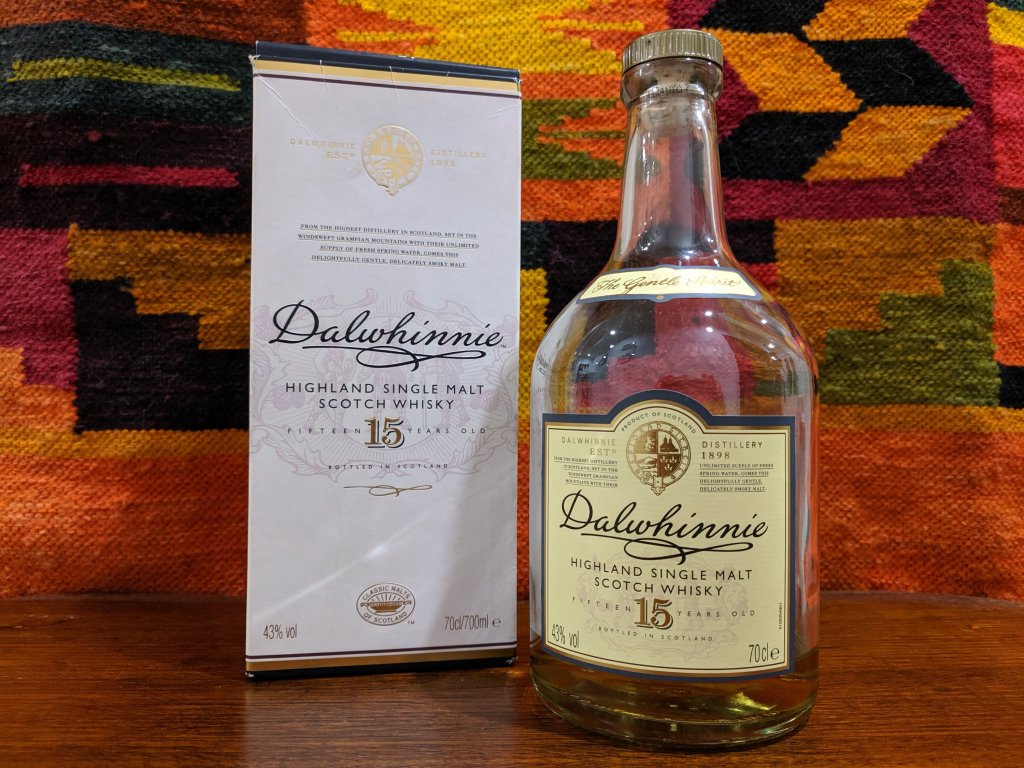
The reason I first started this musing, over breakfast, as you do, was that I was trying to decide what dram would be best to toast to his health tonight (ironic as that is). I’ve mentioned this before, but for some reason I always associate him with Dalwhinnie 15 (whisky-wise at any rate). It’s a bit of a mystery why really, as it’s not like he was a great aficionado of Scotland’s highest distillery.
If anything, I should remember him by the 1L bottles of Johnnie Walker Red he used to keep in the pantry and swore by as a cold remedy. But the whisky snob in me has become jaded against the walking man in the red jacket I think, so while the memory is fond, the desire to imbibe from that particular cup is lacking.
I suppose, getting down to it, I think the real reason I entwine my father and the Dalwhinnie is purely a selfish one – I bought him the bottle. So, is it really a reflection of him, or of me? My own tastes overriding his in my memory?
To mount a defence against myself, the sentiment comes from a place of love. I bought him the bottle when m’colleague and I were first beginning our whisky journey, back before Whisky Waffle was even a thing. Back when we were in a Cold War arms race to impress each other with ever more interesting bottles.
During my teenage years and as a young adult, I had always struggled to talk with my father. I mean in the deep, honest and open sense, sharing the deeper parts of myself with him. We were quite different people, and it didn’t help that I was wrapped up in the arrogance of youth and he tended towards quietude and reserve.
I suspect that with the Dalwhinnie 15, my hope was that here was something that we could enjoy together. I know that I wanted to share my newfound interest with him and to talk with him about it, even though he probably found me slightly pretentious (still am?). The quality of the 15 would have been a good social leveller though. We did enjoy the occasional dram when I was around too, but whether it opened us up I’m not as sure.
I know from friends and the world at large that young men (hopefully) tend to develop a deeper, more equal and respectful relationship with their fathers as they grow older. I’m generally pretty sanguine about his death in itself, but I do regret that he is gone. With maturity and hindsight, I wonder what our relationship, perhaps even friendship (which is a nice thought), would be now. Alas, so many unanswered questions, so many things left unsaid.
I still have that bottle of Dalwhinnie sitting on my shelf. Of course I reclaimed it after the fact, it would be bad manners not to! It’s down to the dregs now, but for some reason I haven’t been able to finish it.
Part of me has just been avoiding writing a review about it. But perhaps, subconsciously, it’s because the bottle is wrapped up with other memories? Would another bottle make it easier to put pen to paper and record the facts as I see, smell and taste them? Perhaps.
Keeping that bottle alive in such a diminished state has been doing it no favours either. After at least five years rattling around the bottom, exposure to time and the elements will have irrevocably changed the nature of the spirit by a thousand tiny cuts… Huh, that’s quite a good metaphor for incurable cancer actually.
I am quietly an advocate for the right to die with dignity, to bring about closure while enough shreds of a person’s humanity remain. Or even just to be able to make choices about how and where you would like to die, assisted or not, if that luxury is able to be afforded to you. My heart broke enough with the gifts of time and the acceptance of Death’s ultimatum, so I cannot begin to fathom the world-shattering pain that suddenness would bring, although I have trodden the broken glass of its edges.
So, I think that the time has come to bring an end to my bottle. Another one can always be bought and the same memory attached to that mnemonic vessel time and again (as long as Diageo doesn’t decide to drop the 15). It is unfair to the ideals that I originally bought it, to share with my father, and the effort that went into creating the liquid itself, to allow it to moulder away on my shelf. Whisky is, of course, for drinking.

No, this one is for me, as my porridge grows cold in the microwave and a small voice in my head quietly screams that I need to get to work (luckily the commute is just to the back room, as I’m working from home during COVID-19). But overriding all else is Dad’s voice, growing fainter every year, which has derailed me on this day to come unbidden into my mind and drip bittersweet words onto the page.
Or maybe it’s just me, alone at the kitchen table.
Slainte Mhor, You.
I miss you.
This episode contains:
– The Waffle, where we discuss the state of the whisky world during the time of Corona;
– The Whisky, where we review the cask strength classic sherry bomb: the Aberlour A’bunadh;
– Mystery Whisky, where Ted struggles to identify a west coast wonder from the USA, partly because Nick gets muddled up between Westland and Westward; and
– Dram in the box, where Ted produces a ground breaking whisky from Sweden